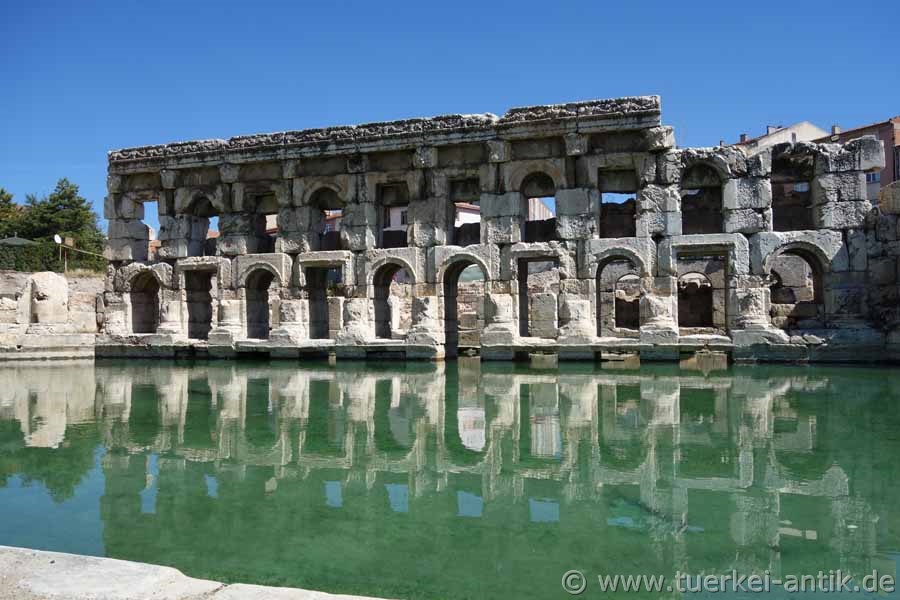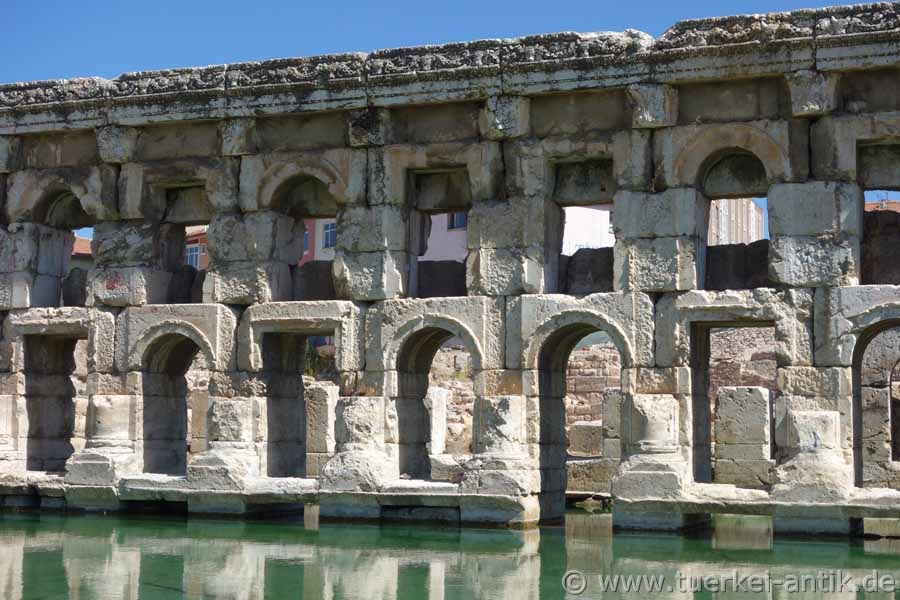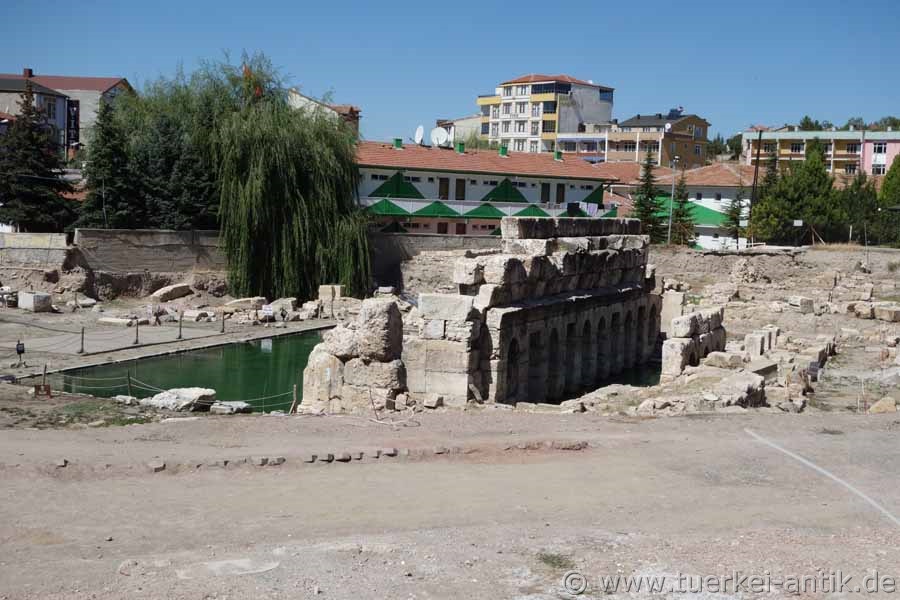 |
| Sarikaya | |||
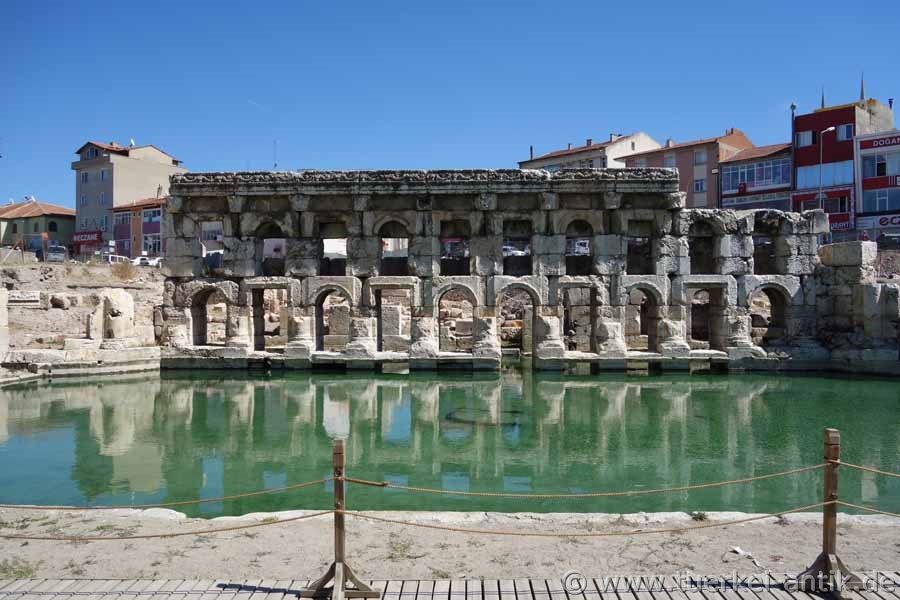 |
|
||
| The ancient pool in front of the facade of the bathhouse from the 1st century AD. | |||
|
Today's Sarikaya was known in Roman times under the name Aqua Sarvenae. The ancient city enjoyed an outstanding reputation as an important spa centre. The Roman city was destroyed by an earthquake, only the ruins of the baths remained. Still today the thermal springs in the southeast of the city are used. They belong to the group of fluoride-containing waters with a flow rate of 28 l/sec. The temperature of the hot spring water is 48 ° C and is used at 38-40 ° C. |
|||
|
|
|||
|
As a result of an analysis carried out by the Ministry of Health, the hot spring water can be used as a complementary and supplementary treatment element for the above-mentioned diseases: rheumatism, arthrosis (joint calcification), pain in the lumbar spine and related sciatic pain, painful gynaecological diseases, skin diseases, liver and gallbladder stones, etc. |
|||
|
|
|||
|
Some legends entwine around the Roman bath called Königsbad.
E.g. the legend of the king's daughter: It didn't take long until a positive effect was felt and the disease improved daily. Gradually her condition improved so that she could walk again after some time and practice. In the end the beautiful girl here was completely healed from the hot water. The girl's grateful father had an imposing bathhouse built around the spring and surrounded the hot spring with a large marble basin. Around this bathhouse a new town was gradually built, named after the king's daughter. |
|||
|
|
|||
| The Architrav - Relief | |||
|
Another legend says that the Roman emperor Marcus Aurelius Antoninus, called Caracalla, had the bath built. Legend has it that during a winter journey through the region, Caracalla came across a swampy lake with steaming water. He took a break and bathed in the steaming water of the lake. While his body was relaxing in hot water in bright sunshine, his beautiful wife Fulvia (Fulvia Plautilla) appeared to him, whom he had murdered to lead the empire alone. |
|||
|
|
|||
|
|
|||
|
Caracalla is one of the cruellest emperors in history. Under the influence of the water, the emperor fell in love with the illusion of his wife, soaked and with her long blond hair. Under the impression of this vision he ordered the construction of a bath at this place. The bath was completed in a very short time by 100 stonemasons and 2,000 workers, using 1,000 Spanish donkeys. |
|||
|
|
|||
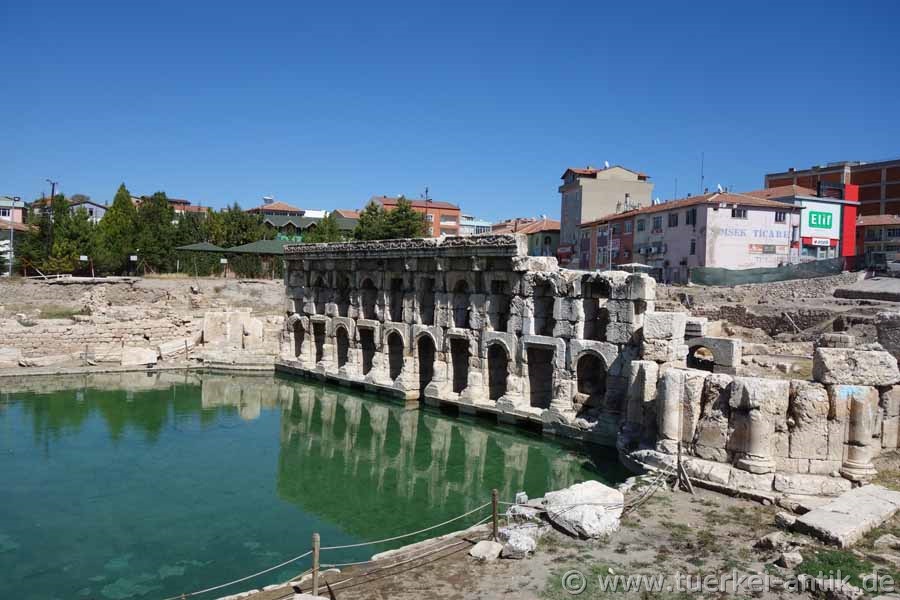 |
|||
|
|
|||
|
On the way to Persia in March Caracalla spent some days with his soldiers in the bath just finished. Again his beautiful wife appeared before his mind's eye. Caracalla looked into the sun for the last time, and again his beautiful wife Fulvia appeared to him. While he took his last breath, a smile shone on his face in the realization of his eternal love for her. |
|||
|
|
|||
|
|
|||
|
|
|||
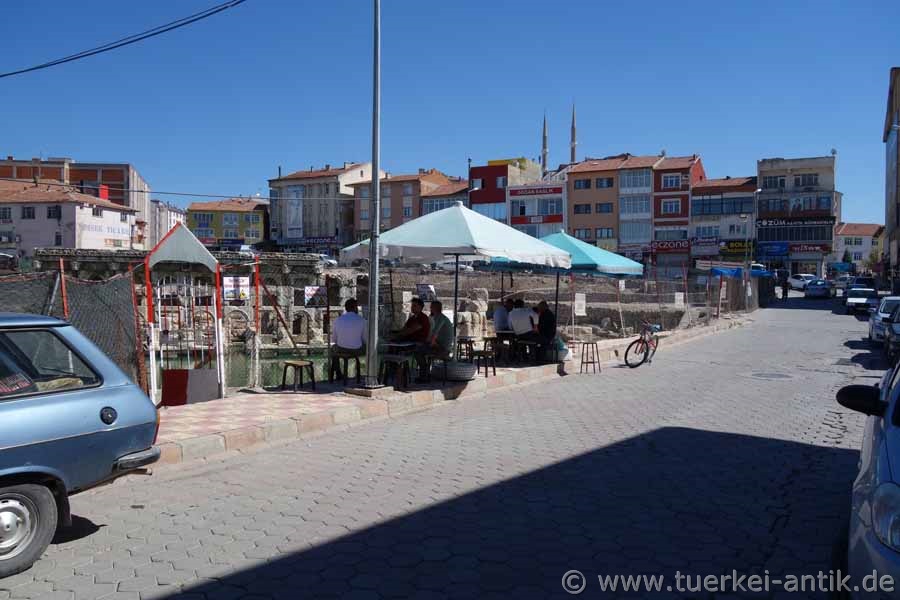 |
|||
| In front of the bathhouse | |||
| Photos: @chim, Monika P. | |||
| Translation aid: www.DeepL.com/Translator | |||
| Source: Wikipedia and others | |||
|
|
|||

